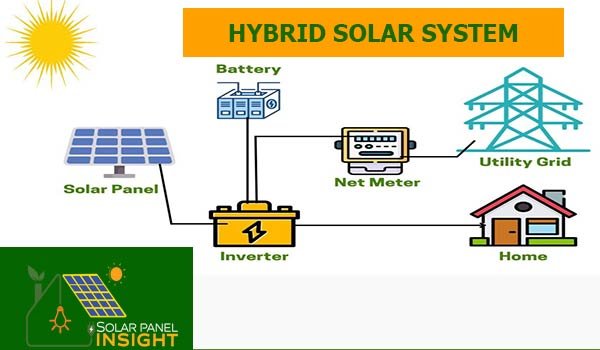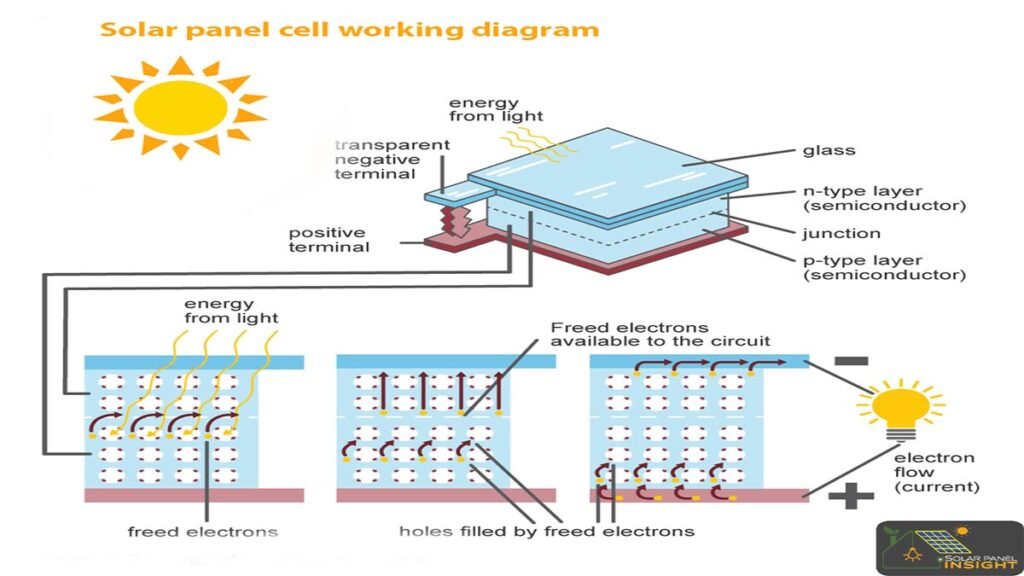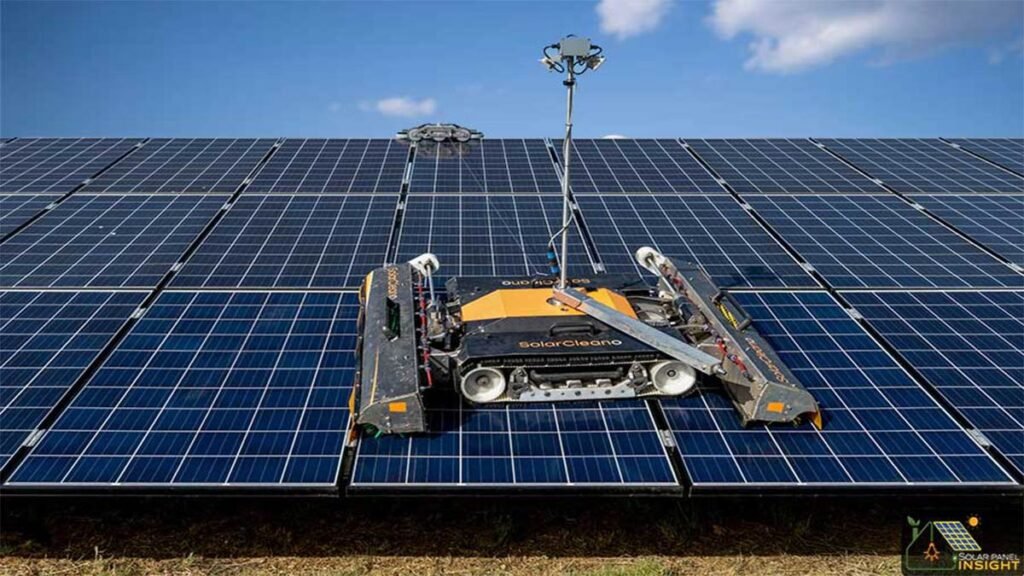If you are going to plan for the installation of a solar system in your home, you must know about the available options. An optimal choice is to install a hybrid solar system, which is highly effective and efficient. Hybrid solar systems offer a very effective and efficient solution for households seeking to install solar systems. While connected to the grid, these systems utilize hybrid inverters and battery combinations to supply electricity during grid faults.
Hybrid solar systems have the additional safety feature of storing electricity from a battery in case the grid as a whole goes down, even with the advantages of remaining connected, such as net metering. In addition, they incorporate battery storage, enabling homeowners to store the electricity generated during daylight hours for later usage when solar energy is not available. Hybrid systems offer high efficiency and dependability, making them an attractive option for homes looking to improve their self-sustainability and environmental friendliness.
What is a hybrid solar system?
A hybrid solar system is an advanced solar system that utilizes solar panels or plates, batteries, and a hybrid inverter that convert sunlight into electric current. Similar to conventional solar panels connected to the grid, hybrid solar systems utilize photovoltaic materials to gather and transform sunlight into energy. A hybrid inverter and battery receive the delivered electricity. Once the battery reaches its maximum capacity, a smart meter transmits any surplus energy to the grid’s power lines. This enables households to keep some electricity, which they can utilize on cloudy days or during blackouts.
Types
There are two types of the Hybrid system.
i. On grid system
The majority of residential and commercial solar power systems are on-grid. In an On-grid, a device links the solar energy to the utility grid. Most solar power systems allow you to use the electricity you produce to power your home’s electrical needs. Typically, you receive payment in the form of a feed-in tariff (FiT) or credits for the surplus solar power you export to the public grid. Simply put, an “on-grid” system connects the solar panels directly to the local company’s controlled power grid.
ii. Off grid system
An off-grid solar system is a self-sufficient power system that operates independently from centralized power grids, consisting of interconnected solar panels, batteries, and a charge controller. Its purpose is to produce and store electricity for future consumption without relying on public electricity grid assistance. Off-grid systems are designed to operate independently without external power sources, making them suitable for households and companies during periods of inadequate sunshine, such as during rainy or winter seasons.
How does a hybrid solar system work?
A hybrid solar power system employs a specialized inverter known as a hybrid inverter, which has the ability to concurrently handle both PV panels and batteries. This type of inverter serves a variety of purposes, including:
- This device transforms the direct current (DC) from solar panels or battery systems into the alternating current (AC) required to supply power to your home.
- It regulates the charging cycle of your system’s solar batteries.
- The system operates in grid-tied mode by synchronizing with the voltage of the local power grid.
Diagram

How hybrid solar system stores energy?
Your hybrid system can use its batteries while connected to the grid. For instance, if your battery charges during daylight hours, you can utilize that stored energy during the night instead of incurring expenses for electricity from the power grid. If your grid-tied solar system has a conventional inverter, there are two ways you might add energy storage. You have the option to upgrade to a new hybrid inverter with battery compatibility, or you can choose to retain the current inverter and add another battery inverter.
Components
Hybrid and conventional solar systems have almost identical components, but some of the components in hybrid solar systems are different.
The following parts of the hybrid solar system are listed:
Solar Panels
PV cells in the solar plates convert sunlight into electrical current.
Wires
Associated wires are required to carry the current from solar plates to batteries, the grid line, and the home circuit.
Hybrid Inverter
It converts DC current from solar panels into AC current that may be used in your home and to charge batteries. Additionally, it can also utilize AC current from the grid if solar current does meet the appliances requirements.
Batteries
We use batteries to store current, which we can use during the night or when the grid system is unavailable. Therefore, we use batteries as a backup.
Grid Connection and Net Metering System
An inverter, or an electric device, connects the solar system to the main grid supply line. You can sell extra electricity to the local grid via net metering, and if your demand for electricity is high, you can buy it from the grid via an interlinking electrical device.
DC connectors
DC connectors generally consist of two places, commonly known as poles or pins, which are designated as positive and negative. Properly joining the negative and positive terminals together guarantees that the electric appliance receives the desired voltage and current, hence avoiding any potential harm to the appliances.
DC Disconnect Switch
A safety device is installed to disconnect the solar supply in the event of emergencies such as fire or sparking. Its purpose is to prevent short circuits in the solar system, particularly during the summer. Ensuring the smooth passage of current is the responsibility of this apparatus.
AC distribution panel
A distribution board, also known as a breaker panel or DB box, is a device used to distribute electrical power throughout a building or facility. The primary purpose of this gadget is to distribute electrical power uniformly among all connected electrical devices. In addition, the principal functions encompass power generation, as well as the transmission and distribution of power.
Charge controller
Solar charge controllers primarily regulate battery charge, but they also offer electrical protection by automatically disconnecting the battery when it hits a critically low voltage. Implementing measures to inhibit the flow of electric current in the other direction, specifically from the battery to the solar panels, during periods when the panels are not producing current.
Monitoring system
Solar monitoring devices enhance system performance by offering vital insights into the operation of the solar panels. These systems have the capability to monitor many performance parameters, including current, temperature, and voltage, enabling operators to pinpoint areas that need improvement.
Advantages
Cost-Effectiveness
Hybrid solar systems protect you from future rate spikes and keep in cheap energy rates for years. It lets you customize time-of-use electricity pricing for optimal solar bill savings.
Flexibility and Scalability
The hybrid system might be designed for a residence and scaled for future power requirements. Customers may desire backup power for medical equipment, lighting, computers, refrigerator, and other appliances. The repository of batteries would be set to fulfil essential load needs and used as needed. A hybrid type of PV system may scale and be flexible, unlike traditional PV systems.
Environmental Sustainability
Solar energy is an eco-friendly source of green energy. Those concerned about environmental issues can choose a hybrid solar system.
Consistent Supply
A hybrid solar system is specifically engineered to supply electricity in the event of a disruption in the power grid. An advantage of a hybrid system is its ability to offer electricity to your home even when the grid is unable to supply power due to technical malfunctions or severe weather conditions.
Net metering possibility
Depending on the government’s policies in that country, net metering can reduce the electricity bill to zero.
Disadvantages
Heavy initial investment
Initially, a large amount is required to install the hybrid system at home or in businesses.
Operation complexity
Hybrid systems can be confusing to operate as they have many systematic complexities.
Limited battery life
Batteries used for backup have a limited lifespan (approximately 4–7 years). After a few years, we reinvest some of the amount in buying new batteries.
Maintenance
Regular maintenance of the system is required so that it can work at its highest efficiency.
Optimization and maintenance tips
To attain the highest efficiency in the hybrid system, it is necessary to meticulously focus on different components and perform regular maintenance. Below are crucial recommendations for maximizing the efficiency of the hybrid system:
Battery Maintenance
- Consistently check the state of charge (SOC) of the batteries.
- Implement a systematic maintenance plan that incorporates regular cleaning of terminals and monitoring of fluid levels for batteries made of lead acid.
- Implement adequate airflow to avoid excessive heat buildup, particularly in regions with higher temperatures.
- Replace deteriorated batteries promptly for maintaining maximum storage capacity.
Inverter Settings
- Optimize inverter settings according to seasonal fluctuations in sunshine to maximize energy generation.
- It is important to regularly inspect and upgrade the firmware in order to take advantage of any improvements in performance.
- Maximize voltage settings for charging batteries in order to prolong battery lifespan.
System Monitoring
- Track hybrid solar system performance with a sophisticated monitoring system.
- Alert for changes from normal operation for quick action.
- Check past performance data for patterns and problems.
- Securely connect and update monitoring devices.
Shade Management
- Regularly check shading patterns for new solar panel efficiency barriers.
- Trim or remove adjacent plants to avoid shade during peak sunshine.
- Consider micro-inverters or power optimizers to reduce shading’s impact on system performance.
Load Management
- Time your high-energy appliances to run during the hours when solar generation is at its highest.
- In order to lower the total energy demand, it is recommended to replace appliances and adopt energy-efficient activities.
- Think of smart home technology that can automatically switch loads depending on the power grid’s availability.
Hybrid vs traditional Off-Grid vs On-Grid solar system
| On-grid system | Off-grid system | Hybrid system |
| Operation: Grid-tied systems do not require battery storage as they are directly connected to the electrical grid. During periods of insufficient solar energy generation, power is drawn from the grid, while any excess solar energy is fed back into the grid. | Operation: Off-grid systems function independently from the electrical grid, relying solely on solar energy and storage of batteries. | Combination of Both: Hybrid systems incorporate the characteristics of both grid-tied and off-grid systems. They can access electricity from the grid as required and store any surplus energy in batteries. |
| Dependence on Grid: These systems are vulnerable to grid errors as they rely entirely on the grid for electricity backup. | Total Independence: They provide complete independence from external power sources, but large battery banks are required to maintain a constant power supply, especially in regions with minimal sunshine. | Enhanced Reliability: These systems provide backup power in case of a grid outage and improve energy utilization by balancing solar, batteries, and grid electricity. |
How to choose right hybrid solar system for your home?
Choosing the right solar system is challenging and confusing. Here are some of the key features that you should keep in mind while installing a hybrid solar system at your home.
- Different brands and companies are offering solar panels with different efficiencies. You can choose the solar panel with the highest efficiency without any confusion. Please check the warranty and ask for authentic documents from the solar provider or company.
- There are various brands of hybrid solar inverters available. You should go with the finest sine wave-producing hybrid inverter, whose claim is available in case of any fault.
- Selecting the ideal location for solar panel installation in the right direction is crucial.
Hybrid solar system for businesses
For businesses, hybrid solar systems are effective and versatile to meet energy demands. Small- to large-scale businesses can install solar systems to lower their electricity costs. At the industrial level, governments also provide subsidies to owners in order to promote an eco-friendly environment.
How hybrid solar system impact on the environment?
Solar energy is an environmentally friendly and non-polluting source of energy that is free from emissions. Hybrid solar systems are engineered to produce both electrical energy and thermal energy. Solar energy is used to warm water or air by capturing the heat emitted by the sun. This can decrease the reliance on fossil fuels for heating residential or commercial buildings. Hybrid solar systems have the capability to produce electricity as well.
Hybrid solar systems provide electricity that can be utilized for residential and commercial purposes, or it can be sent to the power grid. Employing hybrid solar systems can yield a beneficial effect on the environment. Hybrid solar systems have the capacity to diminish greenhouse gas emissions and air pollution. Additionally, they can aid in the preservation of water resources.
Government incentives
Some of the incentives provided by any government may be:
- Net Metering permission
- Tax Rebates and subsidies
- Loans and various financial support options
Myths about hybrid solar system
- This hybrid system does not reduce the electricity bill as conventional solar systems do.
- There are no permanent government policies about net metering, so it may be less beneficial than conventional solar systems.
- Most farmers don’t use hybrid systems because they think they’re more expensive.
Then what’s right?
A hybrid system is both cost-effective and completely independent. Farmers must switch to a hybrid system so they can irrigate their farms during the cloudy season, when solar efficiency is affected.
Future prospective
In the hybrid solar system, hybrid inverters play a major role. Smart inverters will replace the old ones, provide more voltage support to the grid, and produce frequency-regulated current with the highest efficiency.
Is a Hybrid Solar System Right for Me?
If you prioritize energy independence and are prepared to allocate funds for battery replacement approximately every decade, a hybrid solar system offers significant advantages. By maintaining a connection to the power grid, you can access electricity in situations where your solar panels are not receiving sunlight and the stored energy has been depleted from your battery. If net metering is available with your utility company, you have the ability to save money as well.
Conclusion
Solar energy is a very cost-effective and green source of energy. It can be challenging to determine whether to install an on-grid, off-grid, or hybrid solar system. Though the initial cost of the hybrid system is high, its installation can reduce your bill to zero and, in some cases, to negative. If you are not out of budget, you must go with the hybrid solar system.
People also ask
Do I need to hire a professional for hybrid system installation?
Yes, you need a professional to install a solar system, especially a hybrid solar system, because it is more complex than a conventional solar system.
How many years lithium battery can last?
Lithium-ion batteries can last up to 4–7 years, and their lifespan depends upon the charging cycles they are charged per year.


